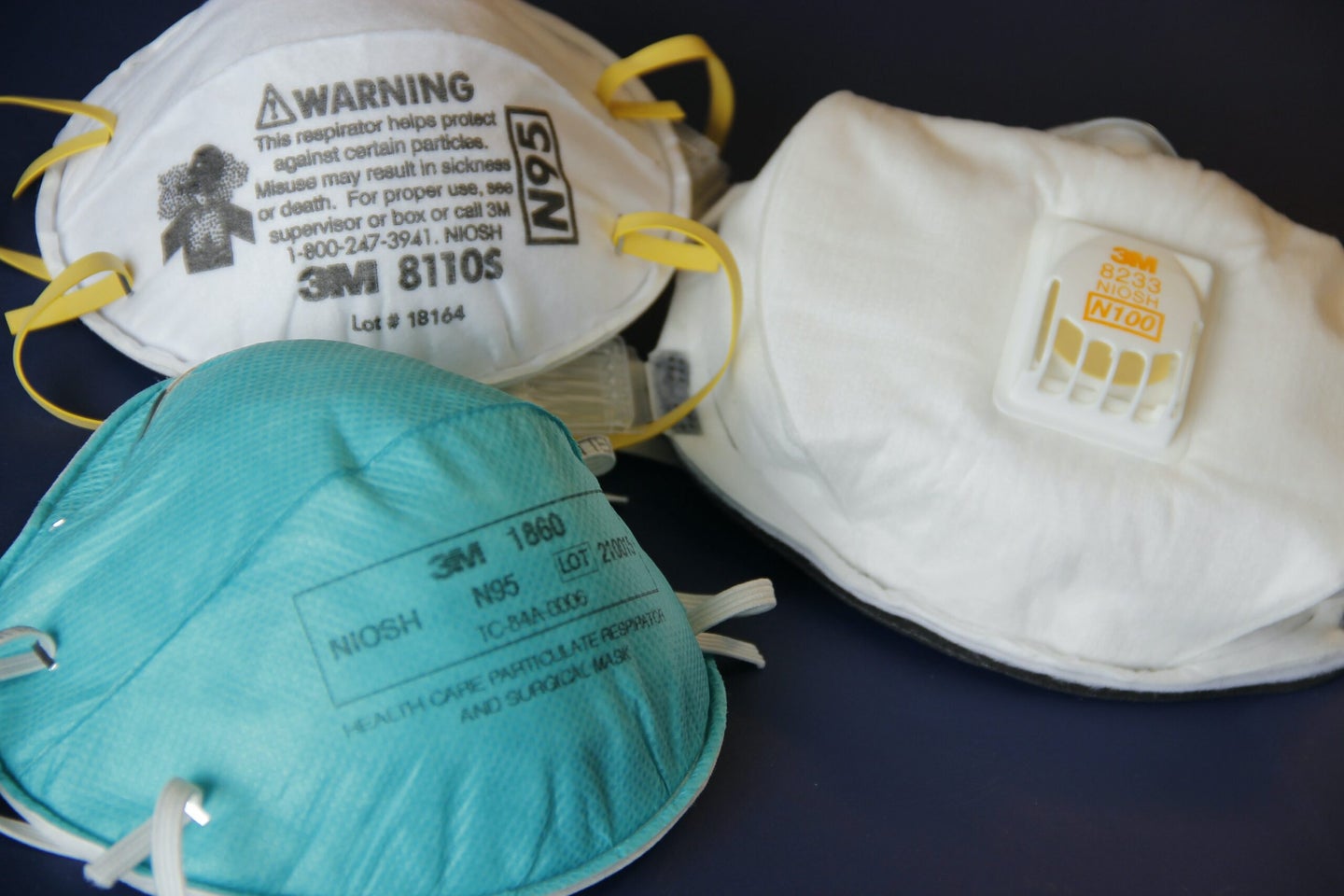Why you should think twice before opting for a valved N95 mask
Research reveals they don’t filter droplets nearly as well as other masks.

Mask-wearing has become a routine part of daily life as we try to curb the spread of COVID-19. And while most people know that not all masks are created equal when it comes to keeping our potentially infectious mouth droplets to ourselves, visualizing that process makes it all the more real. A new paper from the National Institute of Standards and Technology helps demonstrate why one group of masks—valved masks—is almost as ineffective in controlling the spread of mouth particles as wearing no masks at all.
This paper is the first in a series of mask effectiveness research to employ a common technique to visualize the spread of droplets from mouths. Matthew Staymates, an engineer who works for NIST, built the research apparatus in his home workshop during quarantine. It consists of a mannequin set up to exhale fog droplets. Staymates used his own respiratory data to calibrate the mannequin to breathe like a human.
What he found is what health researchers already suspected: that valved masks don’t stop the exhalation of droplets. “The valves are doing exactly what they’re intended to do, which is make it easier for a human to exhale,” Staymates says. “It’s better than nothing,” he says, but not meaningfully so.
The other mask he tested in this paper was a fitted N95 mask, such as would be used in a hospital setting. This mask performed really well, as anticipated, stopping about 95 percent of exhaled particles (that’s where the name comes from.)
Staymates and his collaborators are currently studying other kinds of masks that members of the public wear, including the effectiveness of cloth masks with and without filter pockets. Although that research has not yet been peer reviewed or published, he says its findings on mask effectiveness are about on par with what previous research has shown.
“Our guidance on masks has been largely based on expert opinion,” says John O’Horo, a Mayo Clinic infectious disease doctor who heads up the institution’s Personal Protective Equipment Task Force. Studies like this one provide value because they add actual data to the ongoing conversation around masks. In this case, he says, the expert opinion was proven, but “we may find other mask options that we’re currently shying away from may be more effective than we think as we get more evidence.”
The technique used in this study—filming a mannequin head exhaling under special lighting and using a computer algorithm to count the pixel density of the exhaled fog—also doesn’t provide information on viral load, specifically how much infectious viral particles are exhaled, Staymates notes. But that shouldn’t stop you from picking a different kind of mask, since we already know a lot about the role of respiratory droplets in spreading COVID-19.
“It’s a very neat visualization tool,” says Martin Fischer, a professor of chemistry at Duke University who studies molecular imaging. Some valved masks do have filters between the valve and the outside world, he says, which would reduce or prevent the spread of the virus. But for public health purposes, valved masks are still a bad bet: “The problem that the valved mask has is that you can’t really tell by quickly looking at it.” Wearing a valved mask makes you riskier to others.
While you’re picking your valveless mask, O’Horo notes, make sure you get one that fits you well. “People are wearing them improperly or they’re wearing the wrong size mask,” he says, noting that a correctly-sized mask won’t shift around and expose parts of your face when you’re talking.